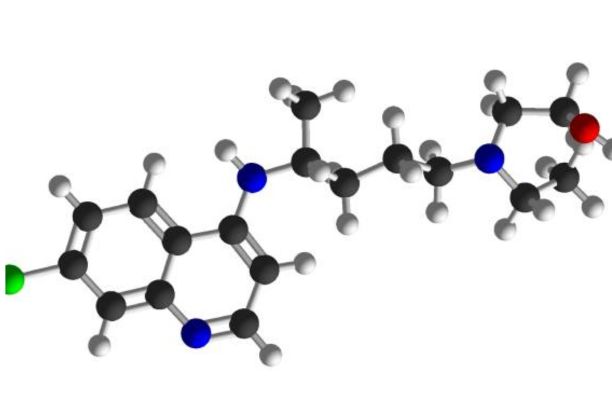Ever noticed how oil and water just don’t mix? It’s not some cosmic dislike—they’re chemically incompatible. At the center of this curious behavior are hydrocarbons, the main components of oils and many other organic substances.
If you’ve ever wondered why hydrocarbons and water are like that couple that just can’t get along, you’re in for an enlightening read.
We’ll delve into the chemistry behind this mismatch and explore the fascinating world where hydrocarbons and water collide—or rather, don’t.
Table of contents
Why are hydrocarbons not soluble in water?
The incompatibility between hydrocarbons and water arises from a fundamental difference in their molecular structures and properties.
Hydrocarbons are composed of carbon and hydrogen atoms linked by nonpolar covalent bonds, creating a symmetrical, hydrophobic structure. In contrast, water is a polar molecule, with oxygen and hydrogen atoms forming an uneven distribution of charge, resulting in a strong dipole moment.
Water’s polarity allows it to form hydrogen bonds with other polar molecules, but hydrocarbons lack such polar groups.
When hydrocarbons are introduced into water, the water molecules surround them, but the weak van der Waals forces between nonpolar hydrocarbons and polar water molecules aren’t enough to overcome the energy required to break the hydrogen bonds within the water structure.
As a result, hydrocarbons remain insoluble, forming distinct layers or droplets in aqueous solutions.
Read: Is Major Chemicals A Good Career Path? New Update
What is the molecular structure of hydrocarbons?
The molecular structure of hydrocarbons consists of carbon (C) and hydrogen (H) atoms. They form a linear or branched chain where carbon atoms are bonded to one another by single (sigma) covalent bonds.
In alkanes, the simplest hydrocarbons, each carbon atom is bonded to four hydrogen atoms, and the carbon-carbon bonds are single. In alkenes, there is at least one double bond between two carbon atoms, and in alkynes, there is at least one triple bond.
These variations in carbon-carbon bonding lead to different types of hydrocarbons with distinct chemical properties and reactivity, making them the building blocks of many organic compounds.
How do hydrophobic interactions work?
Hydrophobic interactions are a fascinating aspect of chemistry. They occur when nonpolar molecules or groups within larger molecules avoid contact with water. In aqueous environments, water molecules form a structured network held together by hydrogen bonds.
Hydrophobic molecules or regions disrupt this structure, causing water molecules to reorganize around them. To minimize disruption, water molecules form a cage-like arrangement, allowing the hydrophobic molecules to remain clustered together.
This phenomenon is driven by the thermodynamic principle of minimizing the system’s free energy. Hydrophobic interactions are crucial in various biological processes, such as protein folding, membrane formation, and the aggregation of nonpolar molecules in aqueous solutions.
Also, read: How Cold Was The Titanic Water When It Sank?
Why hydrocarbons tend to repel water?
Hydrocarbons repel water due to their nonpolar nature. Hydrocarbons consist mainly of carbon and hydrogen atoms bonded by nonpolar covalent bonds. In contrast, water is a polar molecule, with an uneven distribution of charge due to oxygen’s electronegativity.
The polar nature of water allows it to form hydrogen bonds and interact favorably with other polar molecules.
When hydrocarbons are introduced into a water environment, the water molecules cannot form stable hydrogen bonds with them. Instead, water molecules cluster together, minimizing contact with the hydrophobic hydrocarbons.
This leads to the phenomenon of hydrophobic repulsion, causing hydrocarbons to remain insoluble and separate from water.
Are all hydrocarbons insoluble in water?
Not all hydrocarbons are insoluble in water. The solubility of hydrocarbons in water depends on their molecular structure. Hydrocarbons with longer carbon chains and fewer branching tend to be less soluble in water due to their greater hydrophobic nature.
Shorter chain hydrocarbons, like those found in some gasoline components, can have limited solubility in water. However, when hydrocarbons contain polar functional groups like alcohols or carboxylic acids, they become more water-soluble.
These functional groups can form hydrogen bonds with water molecules, facilitating their dissolution.
So, while many hydrocarbons are indeed hydrophobic and repel water, exceptions exist based on their chemical structure.
Also, read: Can Fish See Water? Everything to Know
FAQs
Hydrocarbons can become soluble in water if they contain polar functional groups like alcohols or carboxylic acids, enabling them to form hydrogen bonds with water molecules.
Pure hydrocarbons, which lack polar functional groups, do not typically react with water. Instead, they tend to remain insoluble and separate from water due to their hydrophobic nature.
Yes, hydrocarbons generally sink in water because they are less dense than water and do not mix with it. This results in a separation between the two substances.
Conclusion
The limited solubility of hydrocarbons in water is rooted in their nonpolar nature. The absence of polar functional groups prevents them from forming favorable interactions with water molecules, resulting in hydrophobic repulsion. Understanding this fundamental chemistry sheds light on why oil and water never quite see eye to eye.
References
- homework.study.com – What is the reason why hydrocarbons are not soluble in water?
- quora.com – Why are hydrocarbons insoluble in water?
- toppr.com – Why are hydrocarbons insoluble in water?






